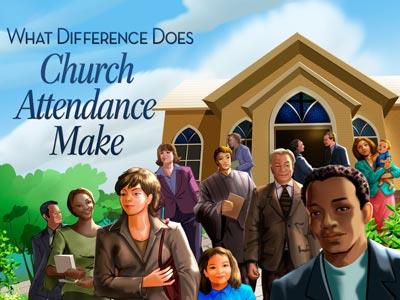-
The Church Of The New Testament - Part 6 Series
Contributed by Sam Mccormick on May 15, 2018 (message contributor)
Summary: Part 6 - While still in its infancy, the church began to experience serious problems. Problems in the church from inside and outside sources seem to be a common element that plagues Christians in every age. What is the solution?
This 13-part series of classes has been many years in the making. About 25 years ago I began in earnest to examine the features, character and characteristics of the church as it existed in its earliest years. As I sometimes do, I kept my notes all along the way, and this series of classes is to a large extent the product of those years of on-and-off studying the subject. Several things in my experience contributed to my interest in making this 25-year study which I will mention along the way, and those go much further back.
There may be some difficulty in using the individual parts of this series separately, although viewer are free to do so if it serves their purposes. But to those whose interest is in knowing what the church was like in its earliest years, I recommend starting with Part 1 - Introduction to the Church of the New Testament and proceeding through the parts consecutively.
I have prepared some slides that I used in presenting the series in a classroom setting before adapting it to use as sermons. I have left my cues to advance slides or activate animations in the notes as posted on Sermon Central. If anyone is interested in having the PowerPoint files with the slides, I will be happy to send them. Send me an Email at sam@srmccormick.net and specify what part(s) you are requesting. Be sure that the word “slide” appears in the subject line. It may take me several days to respond, but I will respond to all requests.
THE CHURCH OF THE NEW TESTAMENT
OUTLINE OF THE STUDY
I. Introduction
II. The Origin of the Church
III. What is the church?
IV. The First Christians
V. Authority in the First Century Church
VI. Problems in the New Testament Church
VII. How the Church Functioned
A. Introduction to Functions
B. Apostles, Prophets, and Teachers
C. False Apostles, Prophets, and Teachers & Various Gifts and Functions
D. More Gifts and Functions
E. Evangelists, Preachers, and Ministers, Servants and Deacons
F. Pastors, Elders, Bishops, etc.
VIII. How the Church Worshiped
===================================
VI. Problems and Ills in the New Testament Church
We have already seen how that over many years, the church deteriorated into a political mechanism of the Roman government, sometimes violent, sometimes persecuting its most devout saints.
But long before any of that, we see problems beginning to emerge within the church.
We saw in Acts 2 that the church enjoyed a brief period of peace and tranquility. All of the early converts were of the same mind and loved one another dearly, to the point of giving up their possessions for the common good.
But the ideal conditions that marked the church’s earliest days soon began to erode as “issues” appeared. Without much detailed written direction, and a myriad of cultural, religious, and opinion-rooted differences, internal problems were bound to erupt. Without the detailed guidance the Jews were accustomed to, they took opposite sides of various questions, and had severe problems accepting gentile converts as equals.
A. PROBLEMS IN ACTS
• Problems in the daily distribution on food. The Hellenistic widows were being neglected (had to be set aright).
• Then, Peter baptized a gentile at Caesarea. The other disciples took him to task, thinking “the ekklesia is for us, not them.” ( that misconception had to be set straight)
• Circumcision and the necessity for Gentile converts to keep the Law of Moses became an issue in the predominantly Gentile church at Antioch.
It took a council of the apostles and elders to settle that question, but it didn’t stay settled for some, who continued to vigorously oppose Paul’s ministry among gentiles.
• The fallout from that action and all of its implications caused some brethren in Jerusalem to have major heartburn with what was going on in the church at Antioch (Galatians 2:11-21)
• If that was not enough, the disciples at Antioch began to be called Christians (Acts 11:26). Luke doesn’t report whether that caused problems, but as inflamed as things were between the churches at Jerusalem and Antioch, it could have potentially been a convenient excuse for the Jerusalem folks to be irritated at one more thing.
B. PROBLEMS MADE EVIDENT IN THE LETTERS.
In some cases, the writers specifically state the problem. In others, the problem is evident from the remedial actions given in the letters.
1. Problems in the church at Rome
The Christian’s relationship to the Roman government. The problem was addressed by declaring that God’s will is for all believers to “be subject to the governing authorities” (Romans 13:1-7), even when they disagree with their practical policies.
Questions about whether Jews have an advantage over gentiles. Paul addressed the question extensively and showed that all are equally sinners before God and equally in need of a Savior (Romans 1:18-3:20).

 Sermon Central
Sermon Central



